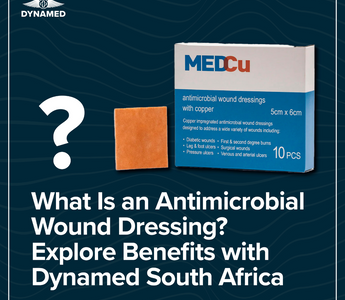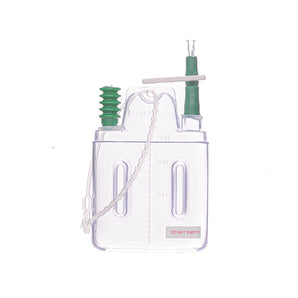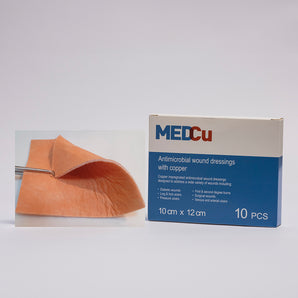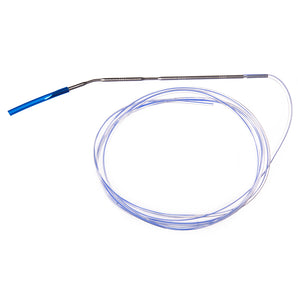When it comes to wound healing, understanding the role of antimicrobial wound dressings is crucial. These dressings are designed to reduce infection risk and promote faster recovery by using materials that combat harmful microorganisms. They maintain a moist environment, which is essential for effective healing, and offer broad-spectrum protection against bacteria, fungi, and viruses.
Incorporating copper ions, antimicrobial dressings work tirelessly to support the body’s natural healing processes. They encourage the production of collagen and elastin, key components in tissue repair. By managing exudate and providing continuous antimicrobial protection, these dressings create an optimal healing environment.
As surgical innovation advances, so does our approach to wound care. Antimicrobial wound dressings are a testament to this progress, offering a blend of traditional healing methods with modern technology. Understanding their benefits can help us make informed decisions about wound management and improve recovery outcomes.
Key Takeaways
-
Role and Benefits: Antimicrobial wound dressings are essential in modern wound care due to their ability to reduce infection risks and promote quicker recovery by maintaining a moist healing environment.
-
Antimicrobial Agents: These dressings employ agents like copper and silver ions for broad-spectrum protection against microorganisms including bacteria, fungi, and viruses.
-
Applications and Advantages: Best suited for wounds prone to infection, such as surgical sites and chronic ulcers, antimicrobial dressings help manage exudate and support the body's natural healing processes.
-
Types of Antimicrobial Dressings: There are various types like silver-based, iodine-based, and honey-based dressings, each serving different purposes and suitable for specific wound types.
- Proper Usage and Considerations: It's crucial to match the dressing to the wound type, avoid overuse to prevent antimicrobial resistance, and consider possible allergic reactions to certain components.
Understanding Antimicrobial Wound Dressings
Antimicrobial wound dressings play an essential role in modern wound care. They effectively reduce infection risk while supporting the body's natural healing process.
Definition and Purpose
Antimicrobial wound dressings, like those from Dynamed, integrate materials that fight harmful microorganisms. These dressings aim to prevent infections, ensuring a moist environment for healing and facilitating collagen production. Many advanced wound care products incorporate copper ions or silver to combat bacteria, fungi, and viruses.
Types of Antimicrobial Agents Used
Antimicrobial dressings utilise various agents to protect wounds. Some common ones include:
-
Copper Ions: Used in MedCu dressings, copper not only fights a wide range of microorganisms but also promotes collagen and elastin production, vital for tissue repair.
-
Silver Ions: Found in many silver wound dressings, they offer robust antimicrobial protection, making them ideal for wounds with a high risk of infection.
- Hydrogels and Hydrocolloids: Though primarily for moisture retention, they sometimes include antimicrobial agents for enhanced protection.
Our choice of dressing depends on the wound type and its specific needs. For more on our wound care products and solutions, visit Dynamed.
At Dynamed, South Africa's leading manufacturer of both basic and advanced wound care products, medical devices, consumables, and pharmaceuticals, we pride ourselves on providing innovative solutions. But why are advanced wound care products so crucial? Let's delve into it, focusing on our range of offerings, from antimicrobial dressings to our broader medical devices.
Understanding wound care can get a bit technical. Questions often pop up, like what makes an antimicrobial wound dressing special? Or, how do these advanced products work better? Let's break it down step-by-step.
How Antimicrobial Wound Dressings Work
Antimicrobial Wound Dressings
Antimicrobial wound dressings, like ours, are designed to limit or prevent infection while keeping the wound moist, which is essential for healing. These dressings incorporate materials like copper ions, which combat harmful microorganisms. This function enhances the body's natural healing process, promoting collagen and elastin production.
Silver vs Copper Dressings
You might wonder, what's the difference between silver wound dressings and copper ones? Silver provides a stable and broad-spectrum antimicrobial efficacy used in many contexts including burn care. Copper, on the other hand, also promotes skin regeneration by stimulating important proteins in the healing process.
Choosing the Right Dressing
There's no one-size-fits-all when it comes to wound care. Consider the wound's specific needs, size, location, and severity. For instance, hydrogel wound dressings might be suitable for dry wounds, while hydrocolloid ones are great for wounds needing moisture retention.
A Step-by-Step Guide to Application
Here’s a quick guide on using our antimicrobial wound dressings:
-
Assess the Wound: Determine the wound type and assess whether antimicrobial properties will benefit the healing process.
-
Clean the Area: Gently clean the wound with saline or an appropriate wound cleanser.
-
Select the Dressing: Choose the size and type of antimicrobial dressing that covers the wound adequately.
-
Apply the Dressing: Place the dressing over the wound without stretching or touching the edges.
- Secure in Place: Use appropriate tape or bandages to keep the dressing in position.
Advantages Over Traditional Dressings
Modern antimicrobial dressings mean fewer dressing changes, less odor, and often a more comfortable healing process. For example, traditional gauze needs frequent changing, which can disturb healing and cause pain. Our advanced dressings stay in place longer, reducing discomfort and speeding up recovery.
But it's not just about convenience; infection control is a huge leap forward. Many traditional dressings simply protect the wound from dirt, whereas antimicrobial dressings actively reduce infection risk by targeting bacteria directly.
Key Insights and Tips
- Storage Matters: Keep dressings in a dry, room-temperature environment to maintain integrity.
- Customise for Success: Tailor dressing choice to wound type. For instance, a shallower cut might benefit from a thinner dressing.
- Regular Inspection: Regularly check the wound for signs of infection or complications.
And finally, for a seamless experience, we recommend checking out more detailed information and purchasing options on our website Dynamed South Africa. Whether you're a healthcare professional or just interested in better wound care at home, there are solutions available to suit your needs.
Common Types of Antimicrobial Dressings
Alright, let's talk about something important—wound care. We all know how crucial it is to manage wounds properly to prevent infections and speed up healing. At Dynamed, South Africa's top manufacturer of basic and advanced wound care products, we're focused on providing the best solutions. Our products, including medical devices and consumables, are trusted by healthcare professionals across the region. But what makes our offerings so relevant today? Let's dive into it.
Silver-Based Dressings
First up, silver-based dressings. Ever wondered why silver's so popular in medical use? It's because silver ions are excellent at killing a broad spectrum of bacteria. Our silver wound dressings play a key role in advanced wound care by combating infections and promoting healing. These dressings are especially useful for burns and chronic wounds. And the application? It's straightforward. Clean the wound, apply the dressing with the silver side facing the wound, and secure it with a bandage. Easy, right?
Iodine-Based Dressings
Next, iodine-based dressings. Iodine's been used for ages as a disinfectant. When it comes to wound care, iodine-based dressings slowly release iodine into the wound, effectively killing bacteria without harming the surrounding tissue. They’re ideal for ulcers and heavily exuding wounds. To use one, just cleanse the wound, remove the iodine dressing from its pack, and place it directly on the wound. Remember to change it as recommended by your healthcare provider to maintain its effectiveness.
Honey-Based Dressings
Let's talk honey. You might think honey's just for sweetening your tea, but it’s got powerful antimicrobial properties, too. Our honey-based dressings provide a moist environment that helps remove dead tissue and promotes healing. They're perfect for wounds with a lot of dead tissue or bacteria. To apply, clean the wound, adjust the honey dressing to the size of the wound, and cover it with a secondary dressing to keep it in place. It's a natural choice that's been trusted for centuries.
And there you have it—a breakdown of some of the main types of antimicrobial dressings we offer here at Dynamed. Whether it's silver, iodine, or honey dressings, each serves a unique purpose in wound care. Curious to learn more about our full range of products? Head over to our website at Dynamed. Got questions? We’re here to help!
Feeling better equipped to handle wound care now?
Dynamed: Your Guide to Effective Wound Care
Ever wondered how certain types of dressings can speed up recovery? At Dynamed, South Africa's top name in both basic and advanced wound care products, medical devices and consumables, we're all about getting you back on your feet. Let's dive into why our insights into antimicrobial wound dressings could change how you approach wound care.
Advantages and Disadvantages
Antimicrobial wound dressings address infections that traditional dressings can't always tackle. Incorporating agents like silver or copper, they offer broad-spectrum protection, helping in faster healing. With advancements in medical devices, these dressings integrate well into various clinical settings, providing both patients and caregivers with effective solutions.
Comprehensive Care with Advanced Options
We at Dynamed also offer advanced wound care options, including hydrogel and hydrocolloid dressings. Why consider these? They manage moisture and keep the healing environment optimal, essential for healing wounds like ulcers or surgical sites. We're passionate about offering versatile solutions to enhance patient outcomes.
Tutorial: Step-by-Step Dressing Application
-
Assess the Wound: Ensure it's clean and free from debris.
-
Select the Dressing: Choose based on wound type, such as silver for antibacterial needs.
-
Prepare the Area: Sterilise the area to avoid additional contamination.
-
Apply Dressing: Place it gently, ensuring no gaps between the dressing and wound.
- Secure it: Use medical tape or a bandage, depending on the location.
Each step prioritises healing and infection prevention, something all our wound care products focus on.
Tips for Optimal Wound Care
-
Keep it Dry: Except when managing moisture, ensure the surrounding skin remains dry.
-
Inspect Regularly: Check for signs of irritation or infection.
- Customise Care: Use products like hydrocolloid for specific needs such as pressure ulcers.
Discover More at Dynamed
How do you know if you're using the right dressing? Curious about what new products might be available? Visit our website for detailed insights and explore the latest in wound care solutions. Whether you're a healthcare professional or just someone seeking better care at home, Dynamed's here to support your healing journey.
This approach blends user-friendly instruction with professional insight, engaging readers while offering practical advice on wound care with our range of products.
Alright, let's have a chat about something that's changing the game in wound care—antimicrobial wound dressings. Why's this topic buzzing, you ask? Well, it's because these dressings are playing a crucial role in our health, especially when it comes to fighting infections and speeding up healing. Dynamed, a leading name in South Africa, offers a range of these advanced wound care products, medical devices, consumables, and pharmaceuticals that are nothing short of revolutionary. You'll see why this is a big deal in the world of medicine by the time you're done.
When to Use Antimicrobial Wound Dressings
Types of Wounds Benefiting from Antimicrobial Dressings
Antimicrobial dressings are particularly valuable for wounds with a high risk of infection or those that are already infected, such as surgical wounds or ulcers. These dressings can be a lifesaver when dealing with burns, which require extra protection from bacteria due to the damage to the skin. Chronic wounds, like diabetic foot ulcers and pressure sores, also benefit greatly from antimicrobial dressings, as they often struggle with healing and can become infected easily if not carefully managed.
Take silver wound dressings, for instance. They release silver ions that target bacteria, making them perfect for wounds where infection is a concern. Then there are hydrogel wound dressings, which keep wounds moist, aiding in the healing of dry wounds. Choosing the right type depends on the wound's characteristics—size, depth, and exudate level all play a part.
Considerations and Contraindications
While antimicrobial dressings offer broad-spectrum protection, not every wound demands their use. For minor cuts or abrasions that are healing well on their own, a traditional dressing might suffice. If overused, these dressings can lead to antimicrobial resistance or disrupt natural skin flora. That's not something we want, right?
Also, consider patients' sensitivities or allergies. Some people might react to components in the dressing, like silver or copper. Avoid using antimicrobial dressings on patients with known allergies to these materials. It's always smart to assess the individual's overall health and specific needs before reaching for an antimicrobial dressing.
For those interested in learning more or getting products to meet your specific needs, pop over to Dynamed's website. Their range is designed to provide solutions for both healthcare professionals and the everyday individual dealing with wound care. There you go—a little insight into when and why to use these smart dressings. Who knew wound care could be so interesting?
Conclusion
Antimicrobial wound dressings have revolutionised the way we approach wound care, offering a blend of traditional and modern methods that cater to diverse healing needs. By selecting the right dressing tailored to specific wound types, we can significantly enhance recovery outcomes. As we navigate the complexities of wound management, it's essential to stay informed about the latest advancements and products available. For those seeking comprehensive solutions, Dynamed provides a wealth of resources and options to support effective wound care. Let's embrace these innovations to ensure optimal healing and patient satisfaction.
Dynamed Pharmaceuticals
Phone: 0861 00 00 43
Website: dynamed.co.za
Email (Sales): sales@dynamed.co.za
Email (Info): info@dynamed.co.za
Google Maps: Find us here
Frequently Asked Questions
What are antimicrobial wound dressings?
Antimicrobial wound dressings are specialised materials designed to combat harmful microorganisms in wounds. They maintain a moist environment conducive to healing and help reduce the risk of infection. These dressings often employ ingredients like silver ions, copper ions, or iodine to effectively manage bacterial growth, supporting faster recovery and improved healing outcomes.
How do copper ions aid in wound healing?
Copper ions support wound healing by encouraging the body’s natural healing processes. They stimulate the production of collagen and elastin, essential proteins for tissue repair. This action not only helps in closing wounds more swiftly but also assists in maintaining skin elasticity and strength during the recovery process.
What types of antimicrobial agents are commonly used in dressings?
Common antimicrobial agents in wound dressings include silver ions, copper ions, iodine, and honey. Silver ions are effective against a broad spectrum of bacteria, copper aids cellular repair, iodine offers disinfectant properties, and honey provides a moist healing environment. Each serves a specific purpose, catering to different wound types and healing requirements.
When should I consider using an antimicrobial wound dressing?
Antimicrobial wound dressings are particularly suitable for wounds at high risk of infection. This includes surgical wounds, burns, ulcers, and chronic wounds like diabetic foot ulcers. However, not all wounds require such dressings, so it's essential to consider the wound’s condition and potential infection risk before choosing this type of dressing.
Are there any contraindications for using antimicrobial dressings?
Yes, certain contraindications exist for using antimicrobial dressings. Not all wounds need such products, and some individuals may have sensitivities to materials like silver or copper. It’s important to assess the patient’s overall health and any allergies before selecting an antimicrobial dressing to ensure it is appropriate for the wound type and the individual.
How do silver-based dressings benefit wound care?
Silver-based dressings are beneficial for their broad-spectrum antibacterial properties. They are particularly effective against various types of bacteria, making them ideal for treating burns and chronic wounds. By inhibiting bacterial growth, these dressings lower the infection risk, providing a conducive environment for the wound's effective and efficient healing.
What are the advantages of modern antimicrobial dressings over traditional ones?
Modern antimicrobial dressings offer enhanced infection control, superior moisture management, and are often easier to apply compared to traditional dressings. They address infections more effectively, promoting faster recovery. Innovations like hydrogels and hydrocolloid dressings further optimise healing by maintaining a suitable moisture balance, vital for managing complex wounds such as ulcers or surgical sites.
How should antimicrobial dressings be stored?
Antimicrobial dressings should be stored in a cool, dry place, away from direct sunlight and moisture to maintain their efficacy. It’s crucial to seal the packaging properly after each use to prevent contamination. Following storage instructions helps ensure the dressing’s active ingredients remain effective and safe for application.
Can antimicrobial dressings be customised for specific needs?
Yes, antimicrobial dressings can often be customised to suit individual wound care needs. By consulting healthcare professionals, you can select dressings tailored to specific wound types and healing stages. Factors such as wound size, location, and infection risk are considered to provide optimal care and improve recovery outcomes.






